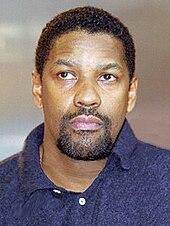
Shelton Jackson "Spike" Lee is an American film director, producer, screenwriter, actor, and author. His work has continually explored race relations, issues within the black community, the role of media in contemporary life, urban crime and poverty, and other political issues. Lee has won numerous accolades for his work, including an Academy Award, two Primetime Emmy Awards, a BAFTA Award, and two Peabody Awards. He has also been honored with an Honorary BAFTA Award in 2002, an Honorary César in 2003, and the Academy Honorary Award in 2015.
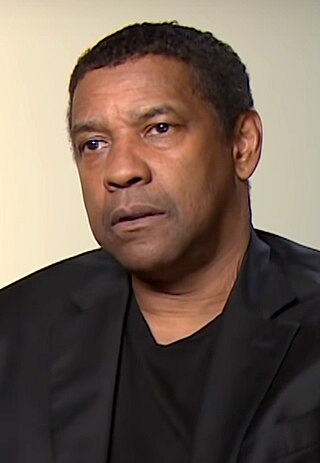
Denzel Hayes Washington Jr. is an American actor, producer, and director. In a career spanning over four decades, Washington has received numerous accolades, including a Tony Award, two Academy Awards, three Golden Globe Awards and two Silver Bears. He was honored with the Cecil B. DeMille Lifetime Achievement Award in 2016, the AFI Life Achievement Award in 2019, and in 2020 The New York Times named him the greatest actor of the 21st century. In 2022, Washington received the Presidential Medal of Freedom.
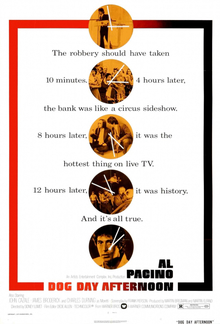
Dog Day Afternoon is a 1975 American biographical crime drama film directed by Sidney Lumet and produced by Martin Bregman and Martin Elfand. The film stars Al Pacino, John Cazale, James Broderick, and Charles Durning. The screenplay is written by Frank Pierson and is based on the Life magazine article "The Boys in the Bank" by P. F. Kluge and Thomas Moore. The feature chronicled the 1972 robbery and hostage situation led by John Wojtowicz and Salvatore Naturile at a Chase Manhattan branch in Brooklyn.

Taxi is a 2004 action comedy film directed by Tim Story and starring Queen Latifah, Jimmy Fallon, Gisele Bündchen, Jennifer Esposito, and Ann-Margret. An incompetent New York City police officer is banned from driving and comes to rely on a talented taxi driver to help him solve a series of bank robberies. The film is a remake of the 1998 French film of the same name and was panned by critics.

John Stanley Joseph Wojtowicz was an American bank robber whose story inspired the film Dog Day Afternoon.

Matthew Libatique is an American cinematographer. He is best known for his collaborations with director Darren Aronofsky on the films Pi (1998), Requiem for a Dream (2000), The Fountain (2006), Black Swan (2010), Noah (2014), and Mother! (2017). Libatique has received three Academy Award for Best Cinematography nominations for his work on Black Swan (2010), A Star Is Born (2018), and Maestro (2023).
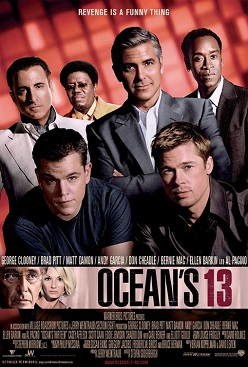
Ocean's Thirteen is a 2007 American heist comedy film directed by Steven Soderbergh and written by Brian Koppelman and David Levien. It is the final installment in the Ocean's film trilogy and the sequel to Ocean's Twelve (2004). The film features an ensemble cast including George Clooney, Brad Pitt, Matt Damon, Andy García, Don Cheadle, Bernie Mac, Ellen Barkin, Al Pacino, Casey Affleck, Scott Caan, Eddie Jemison, Shaobo Qin, Carl Reiner, and Elliott Gould.
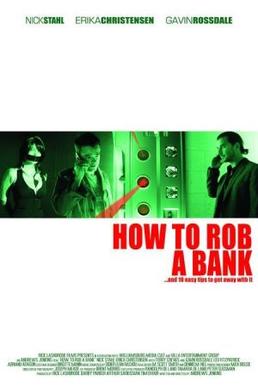
How to Rob a Bank is an American independent crime comedy film. It finished filming in March 2006. It premiered at the 2007 Los Angeles Film Festival, and opened in limited release in the United States on February 8, 2008. The film is about a man who gets caught in the middle of a bank robbery, ending up in the vault with one of the robbers he then treats as a hostage. After grossing $1,006 in the domestic market, the film was released on DVD on September 2, 2008. The film makes many references to the famous British pop band Duran Duran.
Russell Gewirtz is an American screenwriter, best known for writing the screenplay for Spike Lee's 2006 film Inside Man.
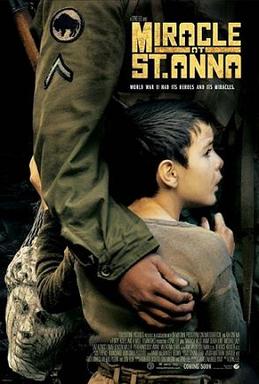
Miracle at St. Anna is a 2008 American–Italian epic war film directed by Spike Lee and written by James McBride, based on McBride's 2003 novel of the same name. The film stars Derek Luke, Michael Ealy, Laz Alonso, Omar Benson Miller, Pierfrancesco Favino and Valentina Cervi, with John Turturro, Joseph Gordon Levitt, John Leguizamo, D.B. Sweeney and Kerry Washington in supporting roles. Set primarily in Italy during the Italian Civil War in World War II, the film tells the story of four Buffalo Soldiers of the 92nd Infantry Division who seek refuge in a small Tuscan village, where they form a bond with the residents. The story is presented as a flashback, as one survivor, Hector Negron (Alonso), reflects upon his experiences in a frame story set in 1980s New York. Several real-life events that occurred during the war, such as the Sant'Anna di Stazzema massacre, are re-enacted, placing Miracle at St. Anna within the genre of historical fiction.
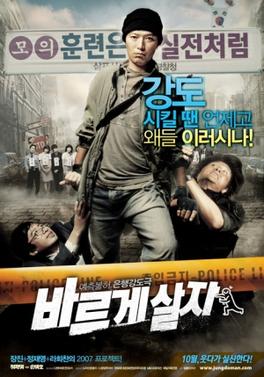
Going by the Book is a 2007 South Korean heist action comedy film. This is a remake of the 1991 Japanese film Asobi no jikan wa owaranai (遊びの時間は終らない).
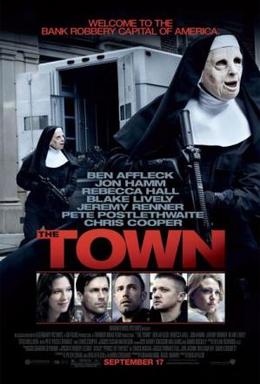
The Town is a 2010 American crime thriller film co-written and directed by Ben Affleck, adapted from Chuck Hogan's 2004 novel Prince of Thieves. The film stars Affleck, Rebecca Hall, Jon Hamm, Jeremy Renner, Blake Lively, Titus Welliver, Pete Postlethwaite, Chris Cooper and Slaine. Its plot follows a Boston bank robber who begins to develop romantic feelings for a victim of one of his previous robberies, while he and his crew set out to get one final score by robbing Fenway Park.

JCVD is a 2008 crime drama film directed by French Tunisian film director Mabrouk el Mechri, and starring Jean-Claude Van Damme as a semi-fictionalized version of himself, a down and out action star whose family and career are crumbling around him as he is caught in the middle of a post office heist in his hometown of Brussels, Belgium.

Bank Chor is a 2017 Indian Hindi-language black comedy film directed by Bumpy, written by Baljeet Singh Marwah and produced by Ashish Patil. The film was produced by Y-Films and distributed by Yash Raj Films. The film stars Riteish Deshmukh and Rhea Chakraborty, with Vivek Oberoi in a substantial role. Oberoi has returned to Yash Raj Films after 15 years, his last film under their banner was Saathiya. The film was released on 16 June 2017.

Den of Thieves is a 2018 American heist action film written, directed, and produced by Christian Gudegast. It stars Gerard Butler, Pablo Schreiber, Curtis "50 Cent" Jackson, O'Shea Jackson Jr., Evan Jones, Dawn Olivieri, Mo McRae, and Max Holloway. In the film, a Los Angeles County Sheriff’s Department clique look to stop a gang of thieves consisting of ex-MARSOC Marines that is planning to rob the Federal Reserve in Los Angeles.

The Vault is a 2017 American horror film directed by Dan Bush, written by Dan Bush and Conal Byrne, and starring Francesca Eastwood, Taryn Manning, Scott Haze, Q'orianka Kilcher, Clifton Collins Jr., and James Franco. It was released on September 1, 2017, by FilmRise.
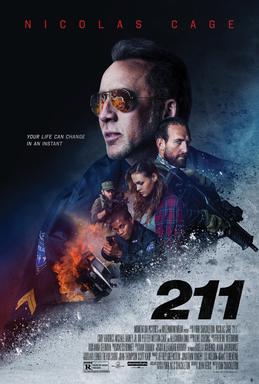
211 is a 2018 American crime action film directed by York Shackleton and written by John Rebus, based on a screenplay by Shackleton. The film stars Nicolas Cage, Dwayne Cameron, Alexandra Dinu, Michael Rainey Jr., Sophie Skelton and Ori Pfeffer. Very loosely based on the 1997 North Hollywood shootout, the plot follows a police officer and a teenager who are locked in a violent shootout with heavily-armed bank robbers.

Inside Man: Most Wanted is a 2019 American crime thriller film directed by M. J. Bassett and starring Aml Ameen, Rhea Seehorn, and Roxanne McKee. A sequel to the 2006 film Inside Man, it was released direct-to-video in the United States on September 24, 2019. It was also released onto Netflix and other pay-on-demand digital platforms.
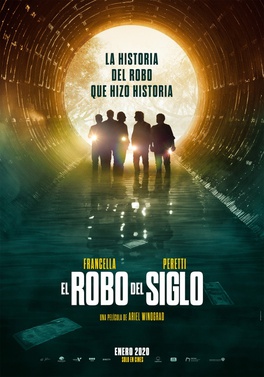
The Heist of the Century is a 2020 Argentine comedy thriller film and is directed by Ariel Winograd. The film stars Diego Peretti, Guillermo Francella, Pablo Rago, Luis Luque, Rafael Ferro, and Mariano Argento.

Locked Down is a 2021 American romantic comedy heist film directed by Doug Liman and written by Steven Knight. The film stars Anne Hathaway and Chiwetel Ejiofor, with Stephen Merchant, Mindy Kaling, Lucy Boynton, Mark Gatiss, Claes Bang, Ben Stiller, and Ben Kingsley in supporting roles.

